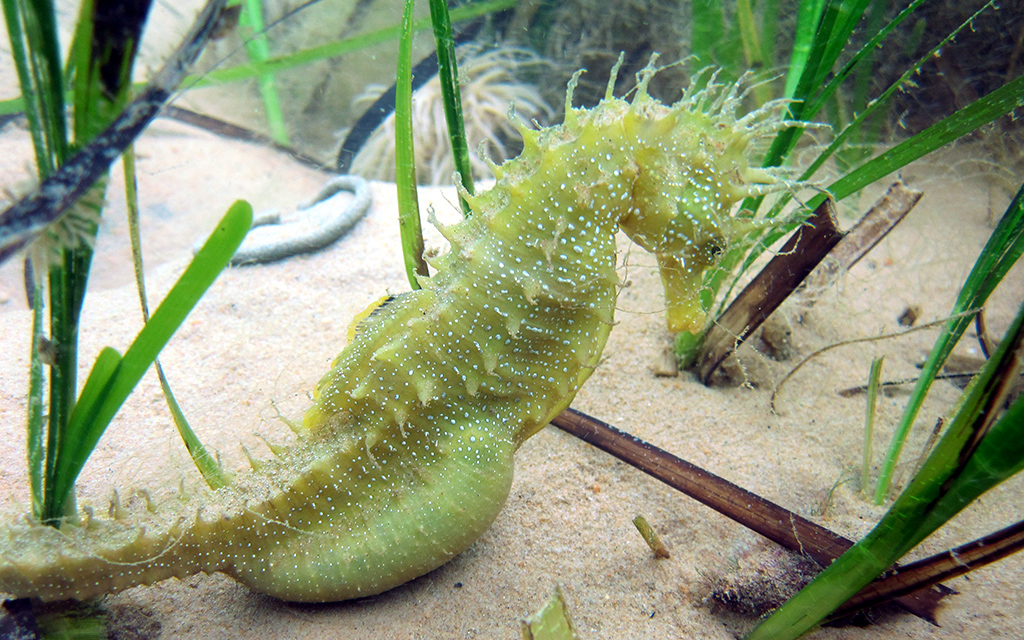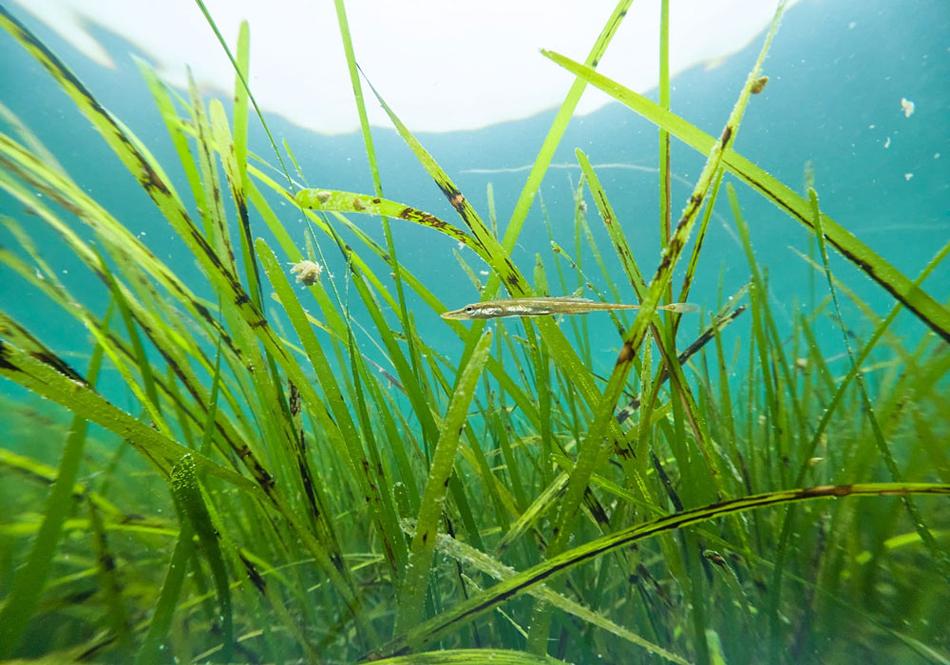
Photo credit: The Seahorse Trust
Andy Torbet joins the growing ranks of seagrass advocates, doing his bit to help look after one of our most secretive sea creatures.
In this column I recently wrote about my work as an Ambassador for The SeaLife Trust and my visit to The Cornish Seal Sanctuary. The Trust supports a long list of projects and other organisations, and recently I was fortunate enough to visit one such scheme seeking to protect an often-overlooked marine habitat, and one surprising creature that relies on it.
I confess that when I began diving, and for much of my underwater career, I overlooked the meadows of seagrass. As a zoologist by initial academic training, I sought the bigger animal species and left the grass to the botanists.
Whereas coral reefs are often thought of as the rainforests of the sea due to their rich biodiversity, from a globally-important carbon-cycle point of view seagrass has far more in common with the great jungles than the reefs.
In fact, an area of seagrass will absorb 35 times more carbon than the same size area of rainforest. Although it only represents 0.2% of the ocean floor, it accounts for 10% of total oceanic carbon sequestration. But that’s not all. Seagrass fields also prevent coastal erosion and provide important nursery grounds for a wide variety of fish and invertebrate species, as well as being home to some very rare creatures. And it was the latter I had come to see. The seahorse.
Few people in the UK are even aware that we have native seahorse species around our shores. Our Spiny and Short Snouted Seahorses are under threat from habitat loss and I was down in Dorset with The SeaLife Trust and The Seahorse Trust, helping install their new Eco Moorings.
I have new found respect and curiosity for seagrass... It is an especially rewarding habitat for snorkelling
Normally, mooring chains swing around and gouge out huge circular holes in the seagrass bed. The Eco Moorings are designed to minimise impact on the seagrass, and by association the seahorse, while still allowing boat users to enjoy the marine environment, something key to keeping folk onside with ongoing conservation efforts. A 2m screw is driven into the seabed with a footprint of only 16cm. This is connected to the mooring buoy by an elastic rope, and so allows for the rise and fall of the tide.
I have new found respect and curiosity for seagrass, especially now knowing what fantastical creatures may be found there. It is an especially rewarding habitat for snorkelling, as it normally lies a short distance off often sheltered shores and in shallow water – the perfect snorkel site.
Snorkelling in such areas in the hope of seeing a seahorse is not discouraged, but you must follow strict and sensible protocols. For more information on how to safely and respectively snorkel at a seagrass (and potential seahorse) site and how to conduct surveys and report any sighting, go to theseahorsetrust.org.
The data gathered by ‘citizen scientists’ is becoming increasingly important to our understanding of the marine environment, and strengthens campaigns to protect such places. So, take a snorkel across the marine meadow, and do let the Seahorse Trust know if you strike gold and see one of our most beautiful marine creatures. It will be a memorable snorkel, and you’ll be doing your bit to save an iconic species and a much under-appreciated habitat.
Article 'Field of dreams' by Andy Torbet first published in SCUBA magazine, Issue 144 April 2024. Images in this online version have been substituted from the original images in SCUBA magazine due to usage rights.

 Author: Andy Torbet | Posted 25 Apr 2024
Author: Andy Torbet | Posted 25 Apr 2024



